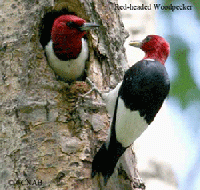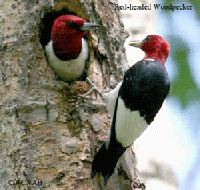## From Pixels to Feathers: Evanston Takes Flight for World Migratory Bird Day
Gamers, unite! This May 10th, we’re swapping controller joysticks for binoculars, and loading up on birdseed instead of ammo. Evanston is celebrating World Migratory Bird Day, and it’s time to explore a different kind of adventure: the epic journey of avian migration.

Forget grinding for loot, this event is all about witnessing nature’s own spectacle, where millions of feathered friends traverse continents in a breathtaking display of endurance and resilience.

The Beauty and Mystery of Bird Migration
A Journey of Epic Proportions

Bird migration is a phenomenon that has captivated humans for centuries. It is a testament to the incredible resilience and adaptability of these feathered creatures. Every year, millions of birds embark on journeys that span thousands of miles, navigating vast oceans, soaring over mountain ranges, and crossing continents. These journeys are driven by the need to find optimal breeding grounds and food sources, responding to seasonal changes in temperature, daylight, and food availability.
Take the Arctic Tern, for example, which holds the record for the longest migration of any animal. This small bird breeds in the Arctic Circle during the summer, where the days are long and the food abundant. But as winter approaches, it undertakes a remarkable journey of over 44,000 miles, flying from the Arctic to the Antarctic and back again every year. This epic migration takes them across the globe, crossing continents and oceans, relying on a combination of instinct, celestial navigation, and the Earth’s magnetic field.
The Avian Architects

Bird nests are marvels of engineering, showcasing the ingenuity and adaptability of these feathered architects. From the intricate woven structures of weaver birds to the sturdy twig homes of cardinals, each nest is a testament to the unique needs of the species and its environment.
The choice of materials, location, and design is a reflection of the bird’s specific requirements. Many birds, like the American Robin, build their nests on the ground, camouflaging them with leaves and twigs to protect their eggs and young from predators. Others, like the Bald Eagle, construct massive nests high in trees, providing a commanding view of their territory and a safe haven for their young.
Understanding these architectural adaptations can provide valuable insights for game developers looking to create realistic and believable bird environments in their games.
Creating Realistic Bird AI

One of the key challenges in game development is creating artificial intelligence that behaves in a natural and believable way. This is especially true for creatures like birds, whose behavior is complex and influenced by a wide range of factors, including their environment, social interactions, and survival instincts.
By studying real-world bird behaviors, game developers can create AI that mimics these natural patterns, resulting in more immersive and engaging gameplay experiences.
- Flight Patterns: Different bird species exhibit distinct flight patterns. Some birds, like geese, fly in V-formations, while others, like hummingbirds, hover and dart erratically.
- Foraging Behavior: Birds have diverse foraging strategies, ranging from ground-feeding to aerial hunting.
- Social Interactions: Many birds are social creatures and display complex communication and flocking behaviors.
- Predator Avoidance: Birds have evolved a range of strategies for avoiding predators, including flight patterns, alarm calls, and camouflage.
By incorporating these real-world behaviors into their AI, game developers can create birds that feel more lifelike and responsive to their environment.
The Future of Birds and Games
Citizen Science in the Digital Age

Games have the potential to engage players in real-world conservation efforts, empowering them to contribute to scientific research and bird conservation. Citizen science initiatives are increasingly incorporating gamified elements to encourage participation and data collection.
For example, Gamestanza could partner with organizations like eBird to create a game that allows players to track bird sightings, contributing valuable data to ornithologists and conservationists. Such initiatives can raise awareness about bird populations, their habitats, and the threats they face.
Virtual Habitats for Virtual Birds

Immersive virtual reality (VR) and augmented reality (AR) technologies offer exciting possibilities for creating realistic and interactive bird habitats within games. Players can explore these virtual environments, observe bird behaviors, and learn about the challenges facing these species.
Gamestanza could develop VR experiences that take players to different bird habitats around the world, allowing them to witness the beauty and diversity of avian life firsthand. AR games could overlay virtual birds onto the real world, providing players with an interactive and educational experience.
Building a Sustainable Future

By combining the power of games with real-world conservation efforts, Gamestanza can play a vital role in promoting a more sustainable future for birds and all living things. Games have the potential to educate, engage, and empower players to make a difference.
Gamestanza can use its platform to raise awareness about the importance of protecting biodiversity, reducing our environmental impact, and creating a world where humans and nature can coexist harmoniously.
Conclusion
This year’s World Migratory Bird Day in Evanston served as a powerful reminder of the intricate connections that bind us to the natural world. Through engaging activities, educational talks, and a celebration of the diverse avian species that grace our skies, the community came together to appreciate the vital role these feathered travelers play in our ecosystem. From the intricate navigation systems that guide them across continents to the crucial role they play in pollination and pest control, the day shed light on the profound impact migratory birds have on our environment and livelihoods.
